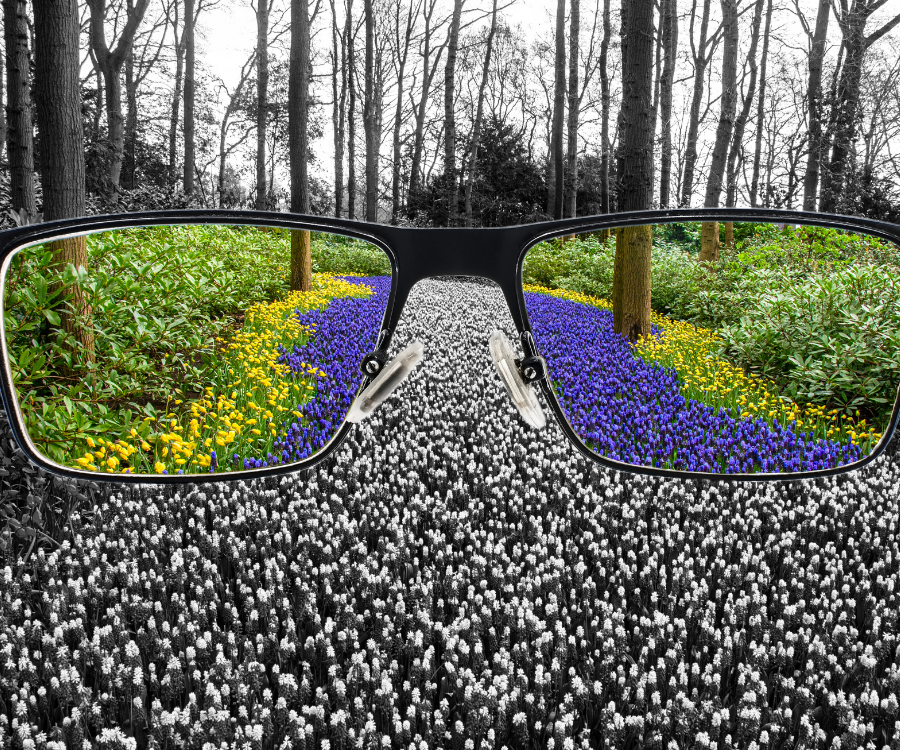Understanding Colour Blindness in Children: A Parent’s Guide
Imagine a world where the vibrant reds of a stop sign blend into the green of a tree, or where a blue sky looks indistinguishable from a yellow sun. For children with colour blindness, this can be their reality. While often misunderstood as seeing only black and white, colour blindness (or colour vision deficiency) is a spectrum of conditions that can impact a child’s learning, play, and daily life in subtle yet significant ways.
As parents, we want to ensure our children thrive. Recognising the signs of colour blindness early can make a world of difference in providing the right support and adjustments.
What Exactly Is Colour Blindness?
At its core, colour blindness is a reduced ability to distinguish between certain colours. Our eyes have special cells called cones in the retina that are responsible for detecting colour – specifically red, green, and blue light. When one or more of these cone types are missing or not working correctly, colour perception is affected.
The most common types of colour blindness are:
- Red-Green Colour Blindness: This is by far the most prevalent, especially in boys (affecting about 1 in 12 boys and 1 in 200 girls). Children with this type struggle to differentiate between shades of red and green. There are variations within this, such as protanomaly/protanopia (difficulty with red light) and deuteranomaly/deuteranopia (difficulty with green light).
- Blue-Yellow Colour Blindness: Less common, this type involves difficulty distinguishing between blue and yellow hues.
- Complete Colour Blindness (Achromatopsia): This is extremely rare, where an individual sees only in shades of grey. It often comes with other vision issues like light sensitivity.
Most cases of colour blindness are inherited, passed down through genes on the X chromosome. This is why it’s far more common in males.
Signs to Look For: Is Your Child Seeing Colours Differently?
Detecting colour blindness in children can be tricky because they often adapt without even realizing their vision is different. They learn to use other cues besides colour to identify objects. However, there are some tell-tale signs parents and educators can watch for:
- Incorrect Colour Usage: Does your child consistently use “wrong” colours in drawings, like a purple sun or green faces?
- Difficulty Naming Colours: While many young children take time to learn colour names, a persistent struggle beyond the usual developmental stage could be a flag.
- Trouble with Colour-Based Tasks: Do they struggle to sort toys by colour, match socks, or complete activities in school that rely on colour identification (e.g., colour-coded charts, worksheets)?
- Frustration with Art or Craft Activities: They might shy away from colouring or painting.
- Confusing Similar Shades: They might mix up red, green, and brown, or blue and purple.
- Difficulty Identifying Ripe Food: For instance, not being able to tell if a banana is ripe by its colour.
If you notice a combination of these signs, it’s a good idea to consult an eye care professional.
Diagnosis and Next Steps
Colour blindness is typically diagnosed by an optometrist using simple, non-invasive tests. The most common is the Ishihara Plate Test, where a child is asked to identify numbers or shapes hidden within patterns of coloured dots. Other tests, like the Hardy-Rand-Rittler (HRR) Test or Farnsworth-Munsell 100 Hue Test, might also be used.
While there’s no “cure” for inherited colour blindness, early diagnosis is incredibly valuable. It allows parents and teachers to understand and support the child effectively, preventing potential frustration and learning difficulties.
Supporting Your Child with Colour Blindness
Understanding is the first step. Here’s how you can help your child navigate a world that often relies on colour:
- Communicate with Teachers: Inform your child’s educators about their colour blindness. This allows them to adjust teaching materials. They can:
- Avoid red-green combinations in worksheets.
- Use patterns, textures, or labels in addition to colour.
- Provide high-contrast materials.
- Allow verbal explanations for colour-based instructions.
- Label Everything: Label crayons, markers, and other art supplies with their colour names.
- Teach Practical Workarounds: Help your child memorize the order of traffic lights (top to bottom) rather than relying solely on colour. For cooking, teach them to use a meat thermometer instead of judging by colour.
- Encourage Open Dialogue: Talk to your child about their experiences. Let them know it’s okay to ask for help when they can’t distinguish a colour.
- Leverage Technology: Some apps can help identify colours, and special coloured lenses (though not a cure) can sometimes help individuals differentiate certain shades.
- Focus on Strengths: Reassure your child that colour blindness is just a different way of seeing, not a limitation. Many successful individuals are colour blind! In fact, some studies suggest colour-blind individuals may even be better at spotting certain types of camouflage.
Colour blindness in children is more common than many realise, and it’s a difference, not a disability. By being observant, seeking early diagnosis, and providing thoughtful support, we can empower our children to embrace their unique way of seeing the world and thrive in every aspect of their lives.

